Introduction to Fungi
What is fungi?
Fungi are a group of eukaryotic organisms that include a wide range of microorganisms that include yeasts, moulds, and mushrooms. They form a distinct kingdom, separate from plants, animals, and bacteria.
Where is fungi?
Fungi can be found in a wide variety of environments around the world. They inhabit diverse habitats, and the presence of fungi is crucial for ecosystem functions. They are commonly found in the soil, air, water, plants, animals, decaying matter, indoor environments and extreme environments.
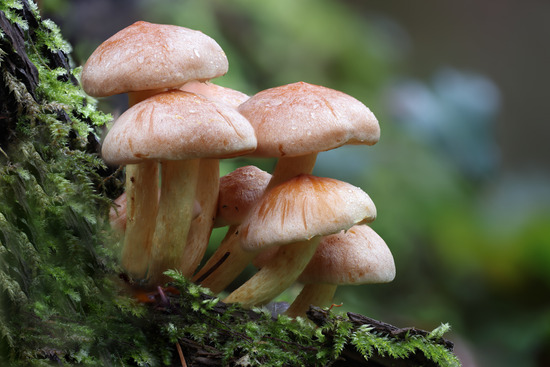
The Difference between Truffles and Mushrooms
Truffles and mushrooms are both types of fungi, however, they have several differences. These include their appearance, habitat, flavour, and culinary uses. Here are some key distinctions between truffles and mushrooms:
- Appearance:
- Mushrooms typically have a visible above-ground structure, consisting of a cap, a stem, and gills or pores underneath the cap. They come in various shapes, sizes, and colours.
- Truffles, on the other hand, grow underground and do not have a visible above-ground structure. They have a rough, irregular exterior, often resembling a small, knobby potato.
- Habitat:
- Many mushrooms grow above ground, often on or near decaying organic matter such as dead wood or in soil. Some varieties are cultivated, while others grow in the wild.
- Truffles grow underground, forming mycorrhizal associations with the roots of certain trees, typically oaks, hazels, and other hardwoods.
- Flavour and Aroma:
- The flavour and aroma of mushrooms vary widely among different species. Some have a mild taste, while others can be savoury, earthy, or nutty.
- Truffles: Truffles are highly aromatic fungi known for their intense and unique flavour. They have a strong, musky aroma that is often described as earthy, garlicky, or even reminiscent of pheromones.
- Culinary Uses:
- Mushrooms are commonly used in cooking and are valued for their diverse flavours and textures. They can be sautéed, grilled, added to soups, or used in various dishes.
- Truffles are considered a luxury ingredient in the culinary world. They are often shaved or grated over dishes like pasta, risotto, or scrambled eggs to impart their distinctive flavour. Truffle oil, derived from truffles, is also used to add truffle flavour to dishes.
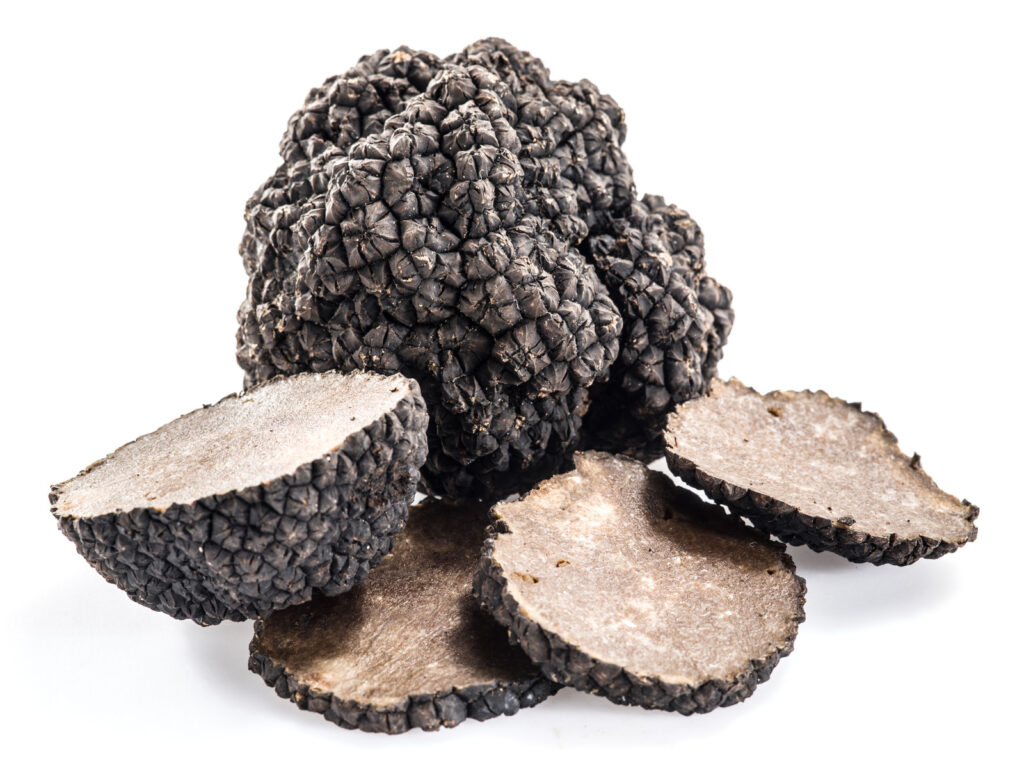
Reishi – the mushroom of immortality in Chinese Medicine
Reishi, scientifically known as Ganoderma lucidum, is a mushroom that holds significant cultural and medicinal importance, particularly in traditional Chinese medicine (TCM). It is often referred to as the “mushroom of immortality” in Chinese culture, and it has been used for centuries for its purported health benefits.
Lynette McHendry, the founder of Spear and Arrow, took reishi mushroom tables when on treatment for breast cancer.
Studies have shown that Reishi helps to:
- Counter free radicals and fight inflammation. Reishi has potent antioxidant and anti-inflammatory properties. In fact, Reishi compares very favorably to the synthetic anti-inflammatory drug prednisone, without the side effects. Additionally, Reishi may be able to counter our susceptibility to many aging-associated diseases, thanks to its powerful ability to fight free radicals and reduce cellular damage associated with oxidative stress.
- Enhance immune system activity. Reishi enhances multiple aspects of the immune system in advanced stage cancer patients and lung cancer patients.
- Fight cancer. Reishi ingredients are toxic to multiple cancer cell lines in culture – including leukemia, breast, ovarian, cervical, and lung cancer cells, among others. Evidence suggests Ganoderic acid is a potential anti-metastatic agent. Metastasis is the migration of cancer cells from their place of origin to other areas of the body.
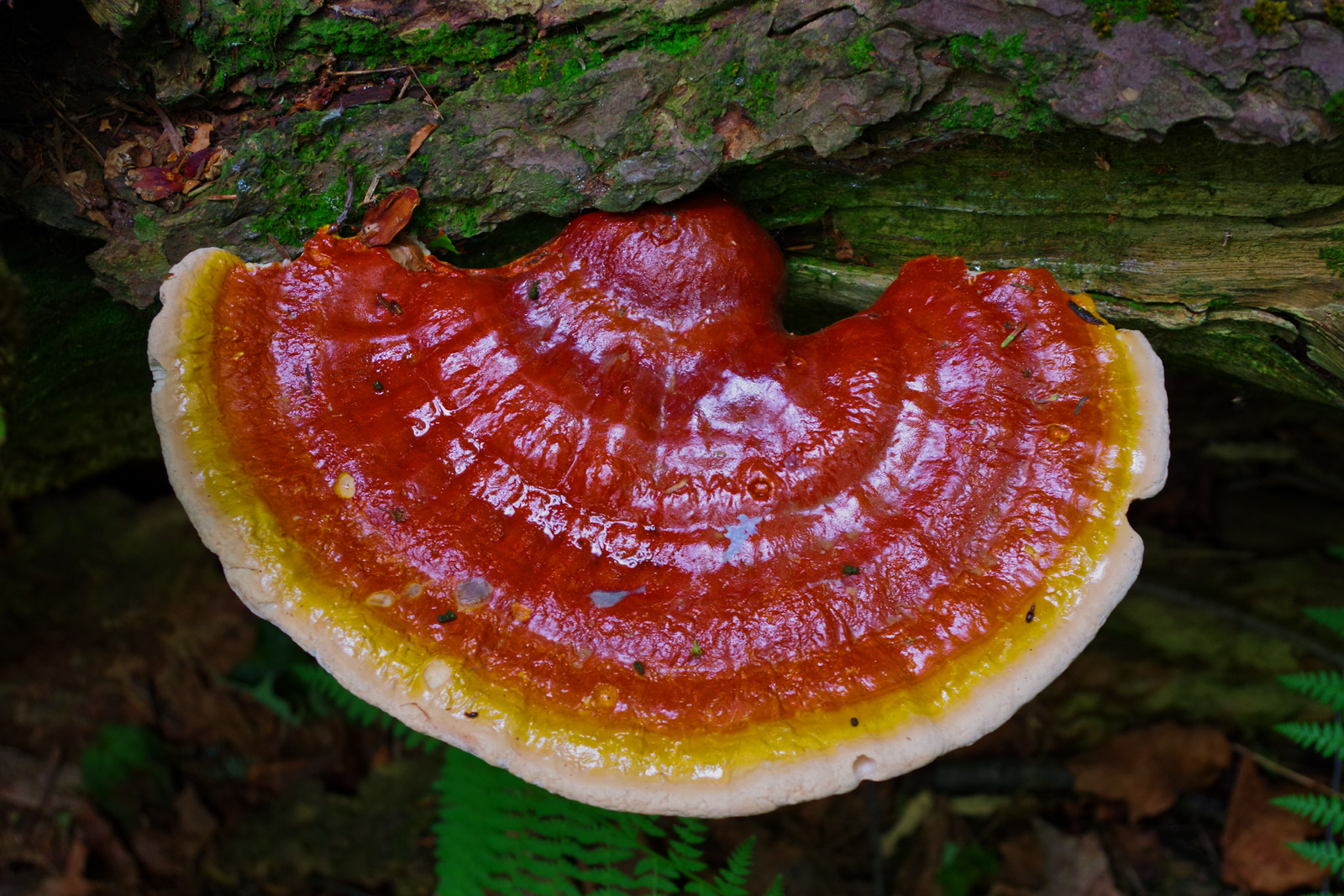
Lions Mane
Lion’s Mane mushroom, scientifically known as Hericium erinaceus, is a unique and distinctive fungus with recognized potential health benefits. Here are some key characteristics and aspects of Lion’s Mane mushrooms:
- Physical Appearance:
- Lion’s Mane mushrooms have a distinctive appearance with long, cascading, white or cream-colored spines that resemble a lion’s mane. This is the source of their common name.
- Habitat:
- Lion’s Mane mushrooms are found in North America, Europe, and Asia. They are often found on hardwood trees, particularly oaks.
- Culinary Use:
- Lion’s Mane mushrooms are edible, and they are appreciated for their delicate, seafood-like flavor and meaty texture. They are often used in cooking, either sautéed, roasted, or added to soups and stir-fries.
- Nutritional Content:
- Lion’s Mane mushrooms are a good source of protein, fibre, and various bioactive compounds. They also contain important nutrients, including minerals and vitamins.
- Anti-Inflammatory and Antioxidant Properties:
- Lion’s Mane mushrooms are believed to possess anti-inflammatory and antioxidant properties. These properties may contribute to their potential health benefits, including support for the immune system.
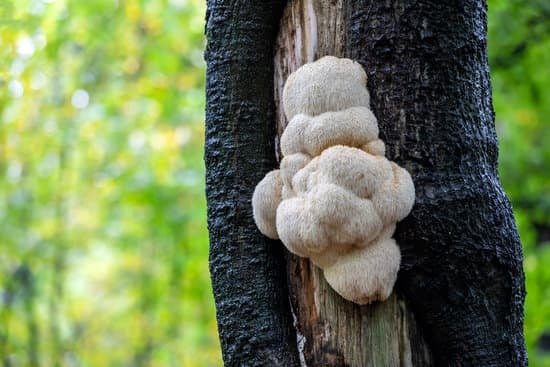
Chaga
Chaga mushroom, scientifically known as Inonotus obliquus, is a type of fungus that grows predominantly on birch trees in cold climates, particularly in regions such as Siberia, Canada, Alaska, and some parts of the Northern United States. It has been used traditionally in various cultures for its potential health benefits. Here are some key aspects of these mushrooms:
- Physical Characteristics:
- They mushrooms have a unique appearance. They typically resemble a dark, irregularly shaped mass or conk growing on the trunk of birch trees. The exterior is hard and woody, while the interior is orange-brown.
- Traditional Uses:
- They have a long history of use in traditional medicine, especially in Russia and Siberia. It has been used as a folk remedy for various health conditions, and preparations from these mushrooms have been consumed as teas and extracts.
- Nutrient Content:
- They contain a variety of bioactive compounds, including polysaccharides, polyphenols, and triterpenes. These compounds are believed to contribute to the mushroom’s potential health benefits.
- Potential Health Benefits:
- Antioxidant Properties: They are is rich in antioxidants, which may help combat oxidative stress in the body. Antioxidants can neutralize free radicals, potentially reducing cellular damage.
- Immune Support: Some studies suggest that these mushrooms may have immunomodulatory effects, potentially supporting the immune system.
- Anti-Inflammatory Effects: They are believed to have anti-inflammatory properties, which may be beneficial for conditions related to inflammation.
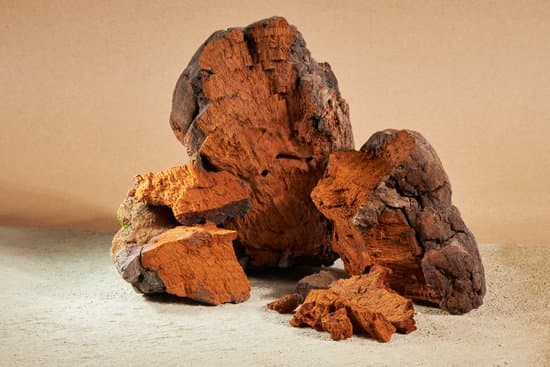
Maitake
Maitake mushrooms, scientifically known as Grifola frondosa, are a type of edible fungus that belongs to the Polyporaceae family. Commonly referred to as “Hen of the Woods,” Maitake mushrooms are valued for their culinary uses and potential health benefits. Here are some key points about Maitake mushrooms:
- Appearance:
- Maitake mushrooms typically grow in large, overlapping clusters with frilly caps. The caps are fan-shaped and have a layered, ruffled appearance, resembling the feathers of a hen. The color can range from pale to dark brown.
- Habitat:
- Maitake mushrooms are often found at the base of oak trees, but they can also grow on other hardwoods. They are native to Asia, Europe, and North America.
- Culinary Use:
- Maitake mushrooms are highly regarded in culinary circles for their rich, earthy flavor and meaty texture. They can be used in a variety of dishes, including stir-fries, soups, stews, and as a flavorful addition to vegetarian and vegan recipes.
- Nutritional Content:
- Maitake mushrooms are low in calories and fat but rich in nutrients. They contain beta-glucans, which are polysaccharides known for their potential health benefits.
- Potential Health Benefits:
- Maitake mushrooms have been studied for their potential health-promoting properties. Some research suggests that they may have immune-modulating effects, potentially supporting the immune system. Beta-glucans, found in Maitake mushrooms, are thought to contribute to these immune-supporting properties.
- Medicinal Use:
- In traditional medicine, Maitake mushrooms have been used for their perceived health benefits. Extracts from Maitake mushrooms are sometimes used in supplement form for their potential immune-enhancing properties.
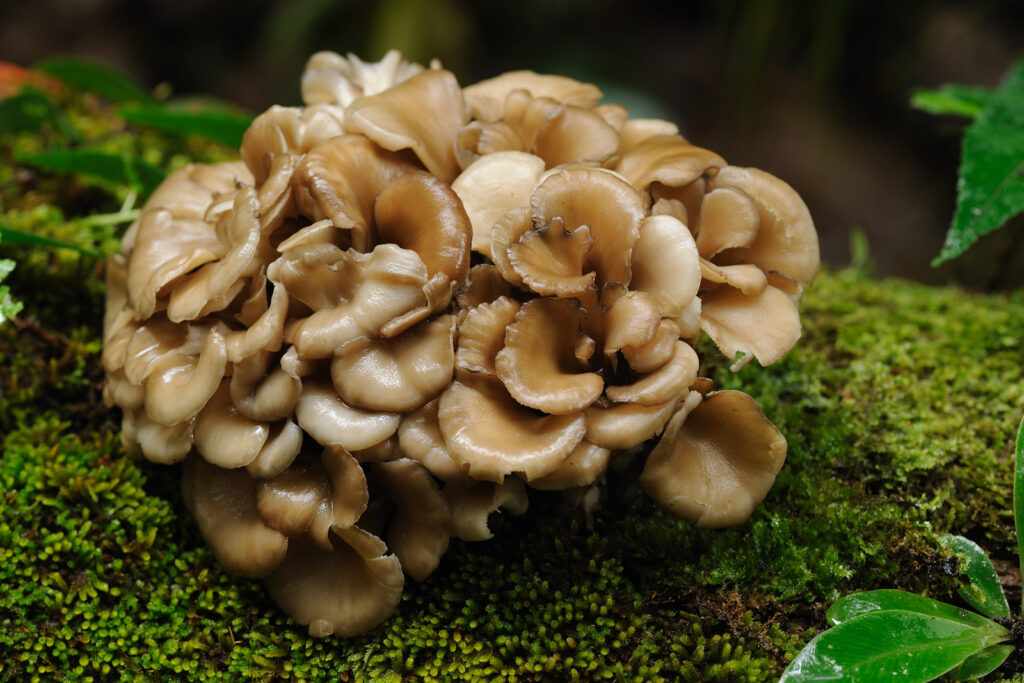
Shiitake
Shiitake mushrooms (Lentinula edodes) are a popular and versatile edible fungus with a rich history in Asian cuisine. Here are some key points about shiitake mushrooms:
- Appearance:
- Shiitake mushrooms have a distinctive appearance with broad, umbrella-shaped caps and a light to dark brown color. The caps have a meaty texture, and the undersides are lined with gills.
- Culinary Use:
- Shiitake mushrooms are widely used in cooking, especially in East Asian cuisines. They have a savory, umami flavor that intensifies when cooked. Shiitakes are used in stir-fries, soups, stews, and various other dishes.
- Nutritional Content:
- Shiitake mushrooms are low in calories and fat but are a good source of nutrients. They contain vitamins (such as B vitamins), minerals (including copper, selenium, and zinc), and dietary fibre.
- Umami Flavor:
- Shiitake mushrooms are known for their umami, the fifth basic taste. This savory flavor is attributed to compounds like guanylates and inosinates found in the mushrooms.
- Potential Health Benefits:
- Shiitake mushrooms have been studied for their potential health benefits. They contain bioactive compounds such as beta-glucans, which may have immune-enhancing properties. Some research suggests that these compounds may contribute to cardiovascular health and support the immune system.
- Shiitake Logs:
- Cultivating shiitake mushrooms on logs involves inoculating hardwood logs with mushroom spawn and allowing them to grow outdoors. This method mimics the natural growing conditions of shiitakes.
- Dried Shiitake:
- Dried shiitake mushrooms are also commonly used in Asian cooking. The drying process enhances the umami flavor, and these mushrooms can be rehydrated before use.
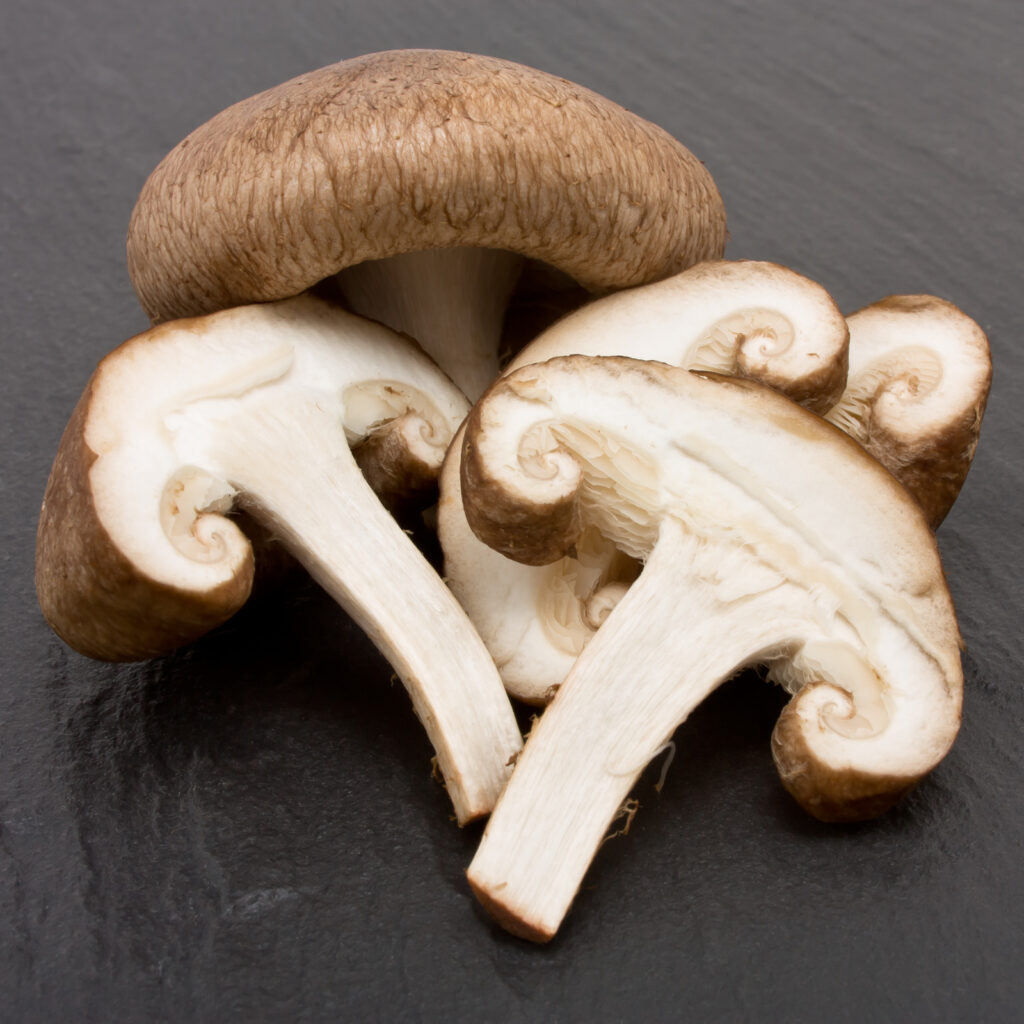
Turkey Tail
Turkey tail mushrooms, scientifically known as Trametes versicolor, are a type of bracket fungus that is widely distributed around the world. They are recognized by their distinctive concentric rings and colorful patterns on the upper surface, resembling the tail feathers of a turkey. Here are some key points about turkey tail mushrooms:
- Appearance:
- Turkey tail mushrooms have a fan-shaped or semicircular cap that resembles the tail feathers of a turkey. The upper surface of the cap can display various colors, including shades of brown, tan, white, and blue. The underside often features tiny pores rather than gills.
- Habitat:
- Turkey tail mushrooms are commonly found on decaying logs, stumps, and branches of hardwood trees. They are saprophytic, meaning they obtain nutrients by decomposing dead organic matter.
- Culinary Use:
- While turkey tail mushrooms are not typically consumed for culinary purposes due to their tough and woody texture, they have a long history of use in traditional medicine.
- Medicinal Use:
- Turkey tail mushrooms have been used in traditional Chinese medicine and other traditional healing systems for centuries. They are believed to have immune-modulating properties and are often used to support general health and well-being.
- Extracts from turkey tail mushrooms contain compounds such as beta-glucans, polysaccharides, and triterpenoids, which have been studied for their potential health benefits.
- Potential Health Benefits:
- Immune Support: Some research suggests that the polysaccharides and beta-glucans in turkey tail mushrooms may help modulate the immune system, potentially enhancing its ability to respond to infections.
- Anti-Inflammatory Properties: Certain compounds found in turkey tail mushrooms may exhibit anti-inflammatory effects, which could be beneficial for conditions associated with inflammation.
- Supplements:
- Turkey tail mushroom supplements, often available in the form of extracts or capsules, have gained popularity as a way to potentially harness the health-promoting compounds found in these mushrooms.
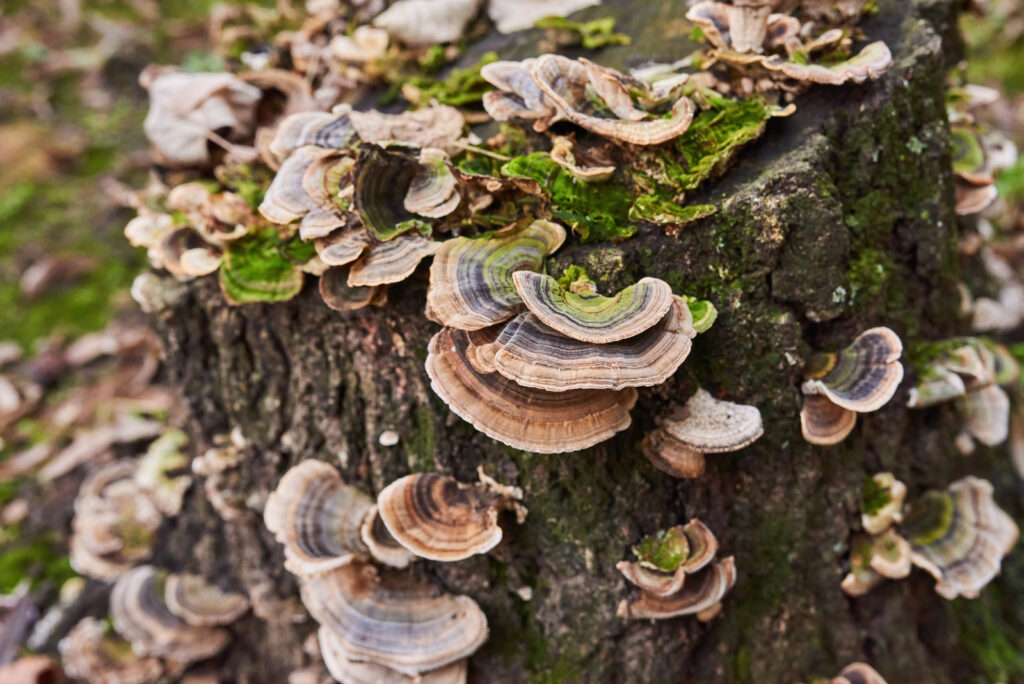
Cordyceps
Cordyceps is a genus of parasitic fungi that includes several species known for their unique life cycle and potential health benefits. One of the most well-known species is Cordyceps sinensis.
Studies have shown that Cordyceps helps to:
- Manage blood sugar levels in a healthy range. Emerging evidence indicates that the Cordyceps is likely to prove to useful in the management of diabetes.
- Improve transplant success rates. Cordyceps protects the heart and lowered the rate of cardiac rejection in an animal model of heart transplantation. When given after kidney transplants, Cordyceps also reduced the rejection rate, improved kidney and liver function, boosted red blood cell production, and lowered infection rates in patients.
- Strengthen the immune system. Cordyceps boosted production and activity of various components of the immune system in animal experiments.
- Enhance antioxidant ability. Cordyceps raised levels and activity of innate enzymatic antioxidant systems in animal models.
- Improve exercise performance. Cordyceps made international headlines by helping Chinese runners break two world records by huge margins at the Asian Games in 1993. The mushrooms likely improve stamina because they stimulate production of ATP, which is one of the main sources of energy in our body’s cells. Cordyceps has also been shown to dilate the aorta – the main artery in the body that supplies oxygenated blood to the entire circulatory system – by 40%, greatly increasing blood flow and enhancing endurance.
- Fight cancer. In laboratory experiments, Cordyceps was selectively toxic for cancer cells, without affecting normal, healthy cells. Bioactive ingredients in Cordyceps including cordyceptin attack and destroy mouth, bladder, prostate, breast, liver, lung, cervical, leukemia, and colorectal cancers as well as lymphoma, melanoma, and neuroblastoma in culture.
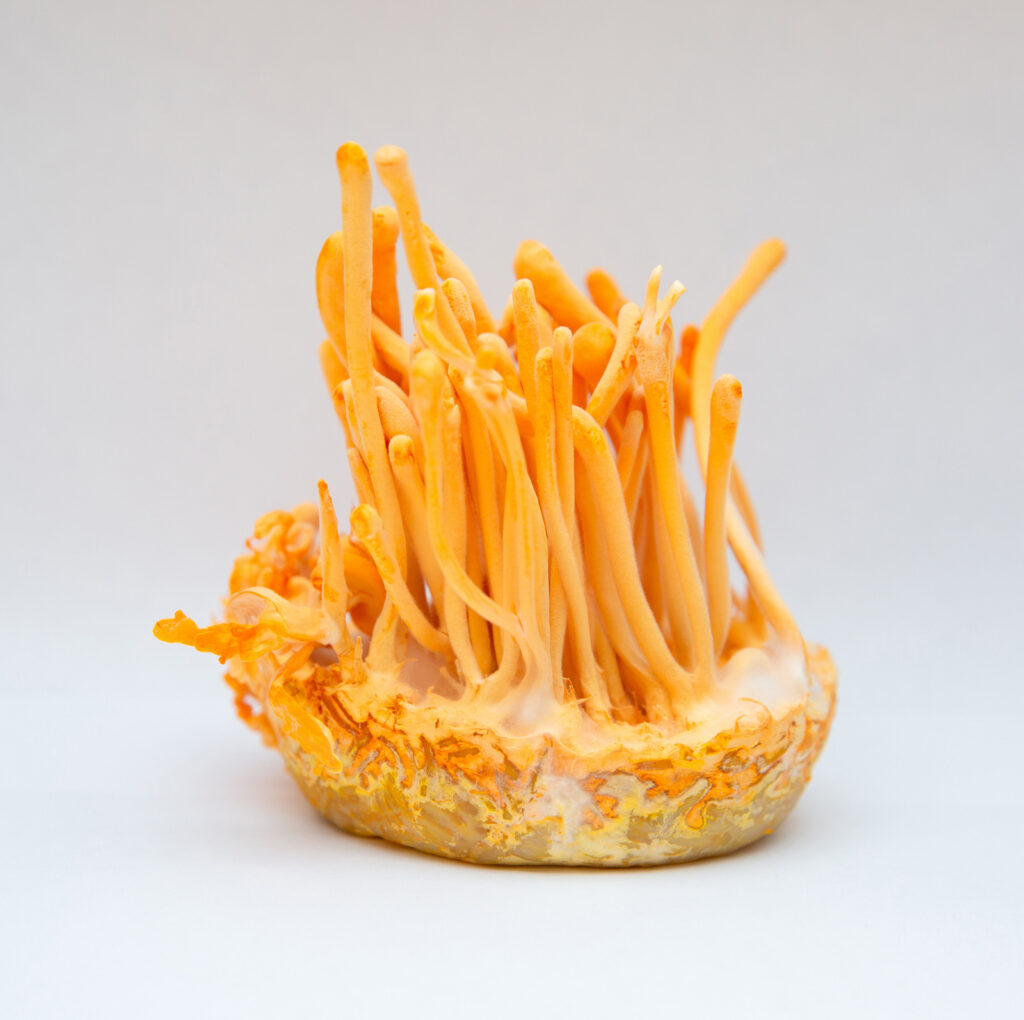
Read more about these types of mushrooms here
Different ways to take mushrooms
Culinary Mushrooms:
- Cooking:
- Sauteing: Mushrooms can be sautéed in butter or olive oil with garlic, herbs, and spices.
- Grilling: Larger mushrooms, like portobello or shiitake, can be grilled and used as a meat substitute.
- Stir-Frying: Add mushrooms to stir-fries with vegetables, tofu, or meat.
- Soup and Stews:
- Mushrooms add depth of flavour to soups, stews, and broths. Shiitake and maitake mushrooms are commonly used in Asian soups.
- Raw in Salads:
- Some mushrooms, like white button mushrooms or cremini, can be sliced and added raw to salads for a unique texture and flavour.
- Pizza Toppings:
- Sliced or diced mushrooms make a delicious pizza topping. They add a savoury, umami flavour.
- Drying and Powdering:
- Some culinary mushrooms can be dried and powdered to make a seasoning or flavour enhancer for various dishes.
Medicinal Mushrooms:
- Supplements:
- Medicinal mushrooms are often consumed in supplement form, available as capsules, tablets, or extracts.
- Mushroom extracts are concentrated forms of the active compounds found in the mushrooms.
- Tea or Infusions:
- Some people make teas or infusions by steeping dried medicinal mushrooms in hot water.
- Reishi, chaga, and cordyceps are examples of mushrooms commonly used in teas.
- Smoothies:
- Medicinal mushroom powders can be added to smoothies for a nutrient boost.
- Combining them with fruits, vegetables, and other superfoods can create a healthful beverage.
- Tinctures:
- These are liquid extracts made by soaking mushrooms in alcohol or another solvent. They are taken in small amounts and are believed to provide concentrated benefits.
